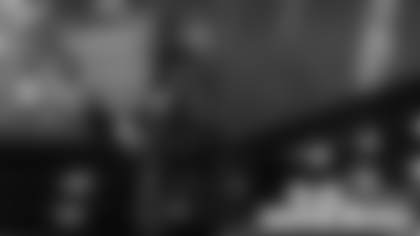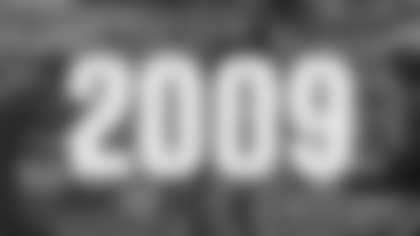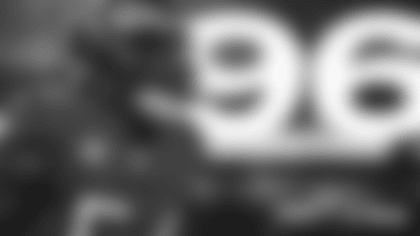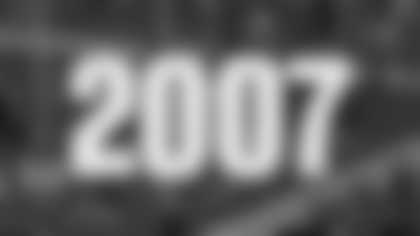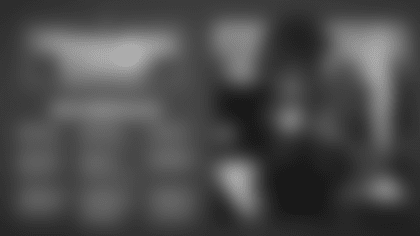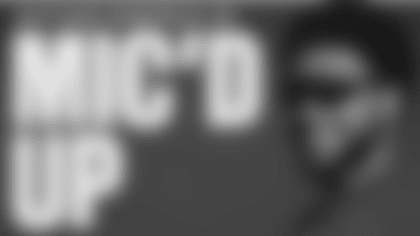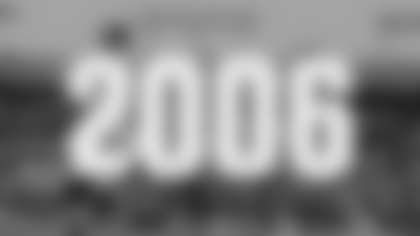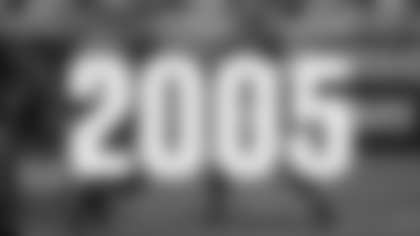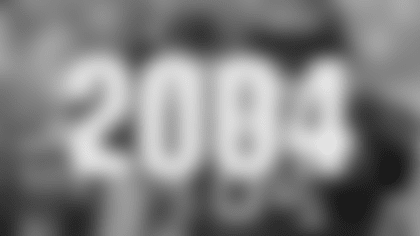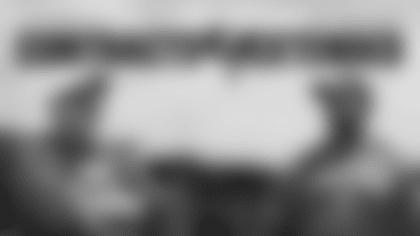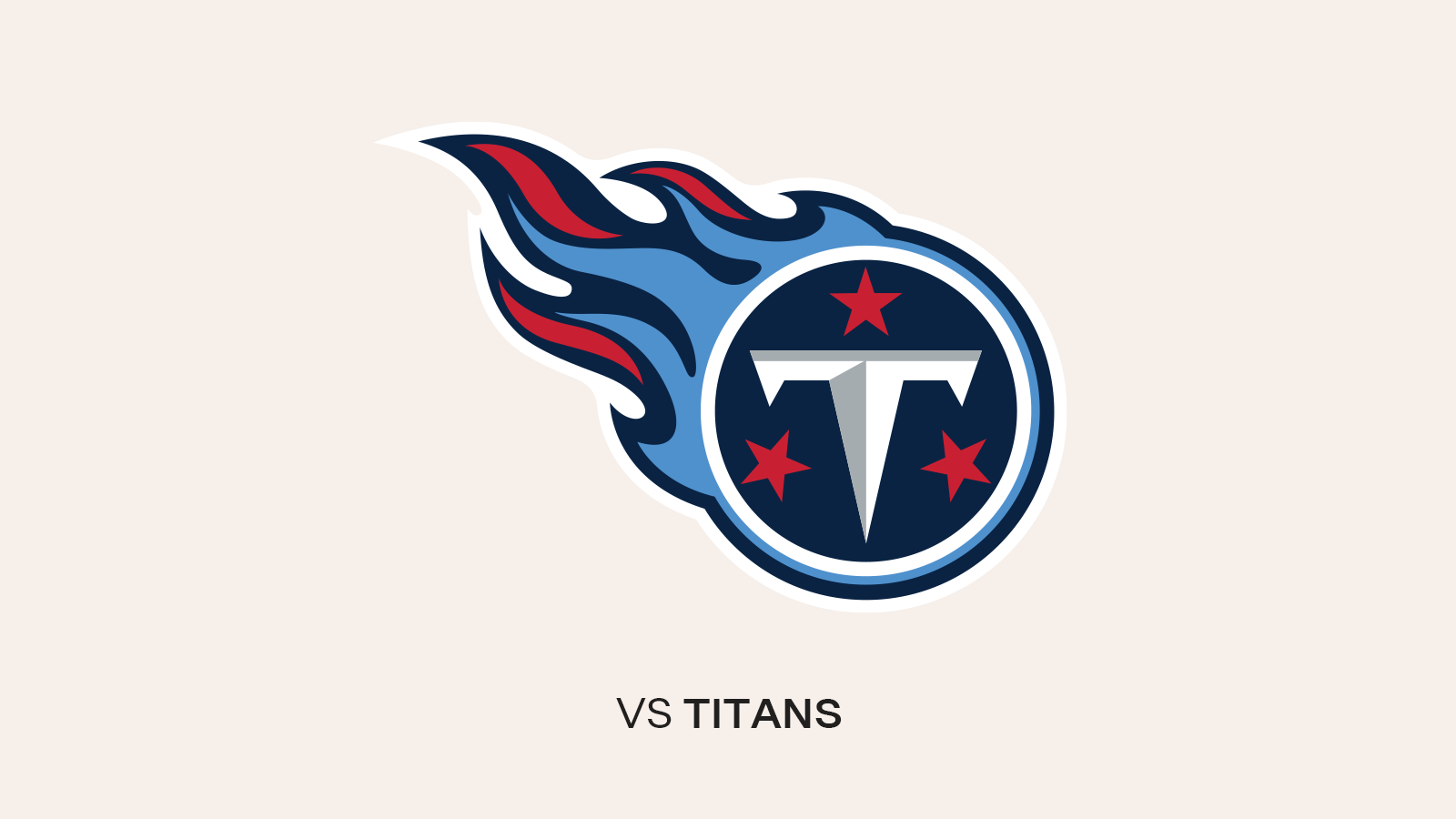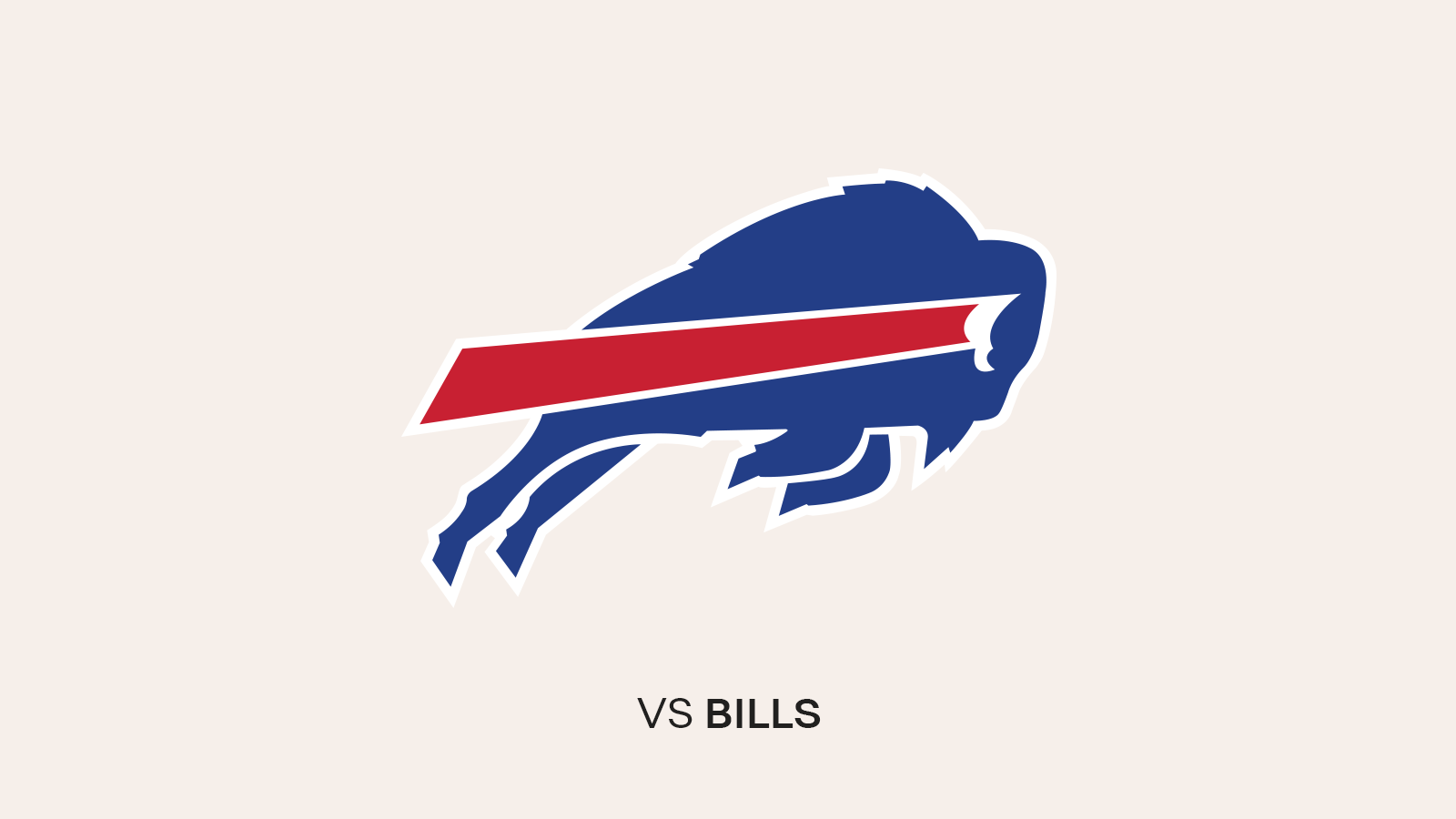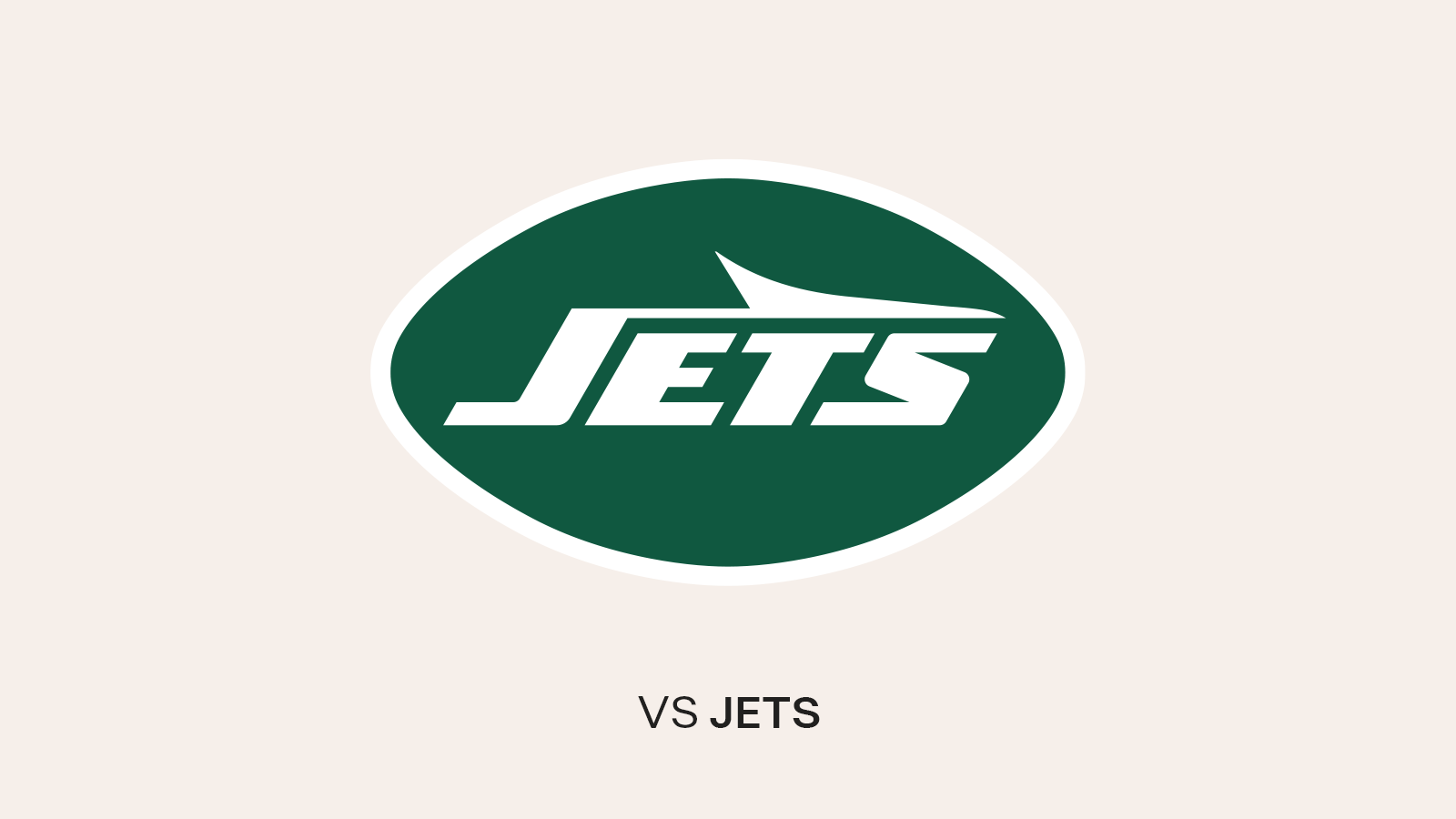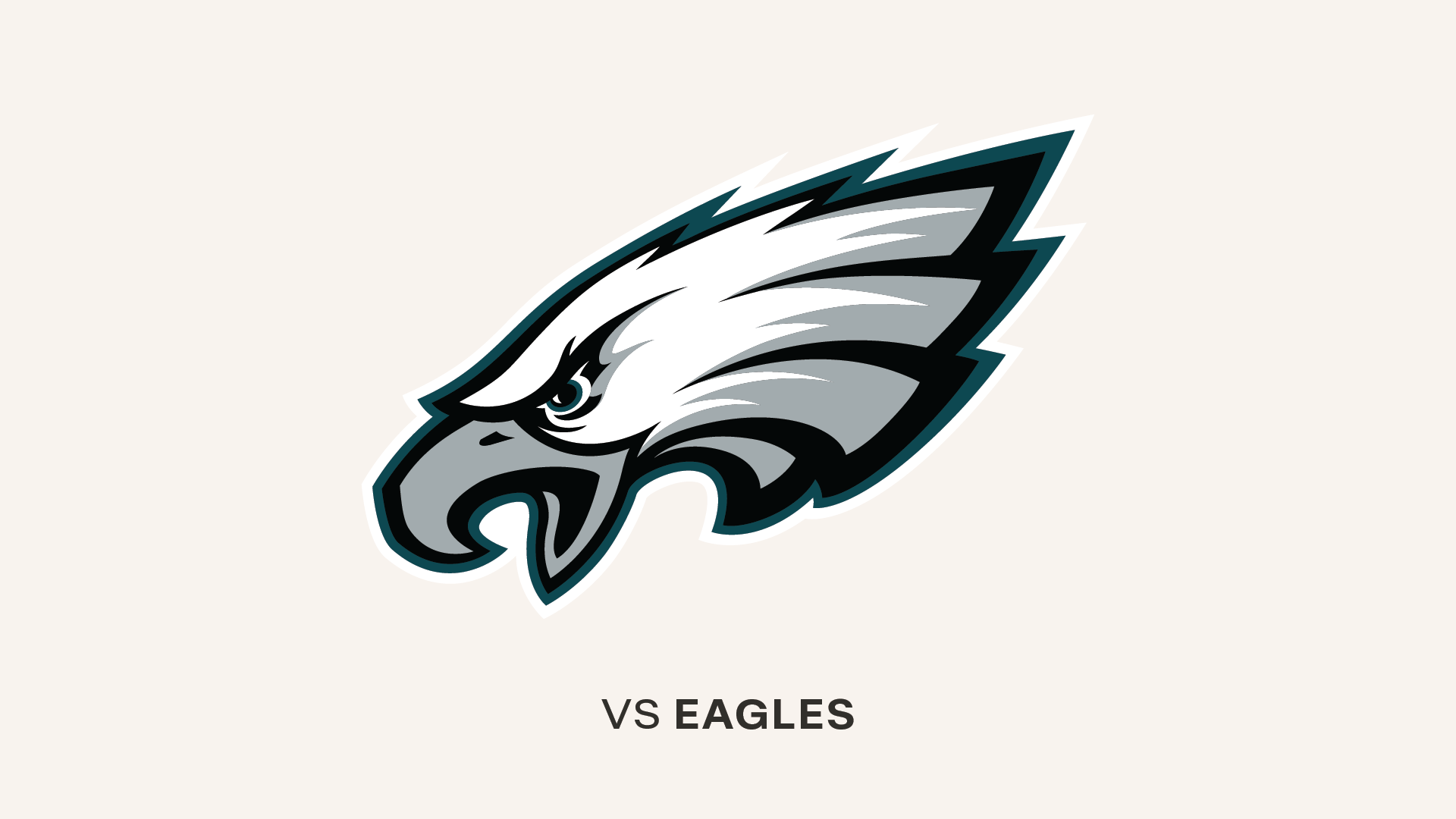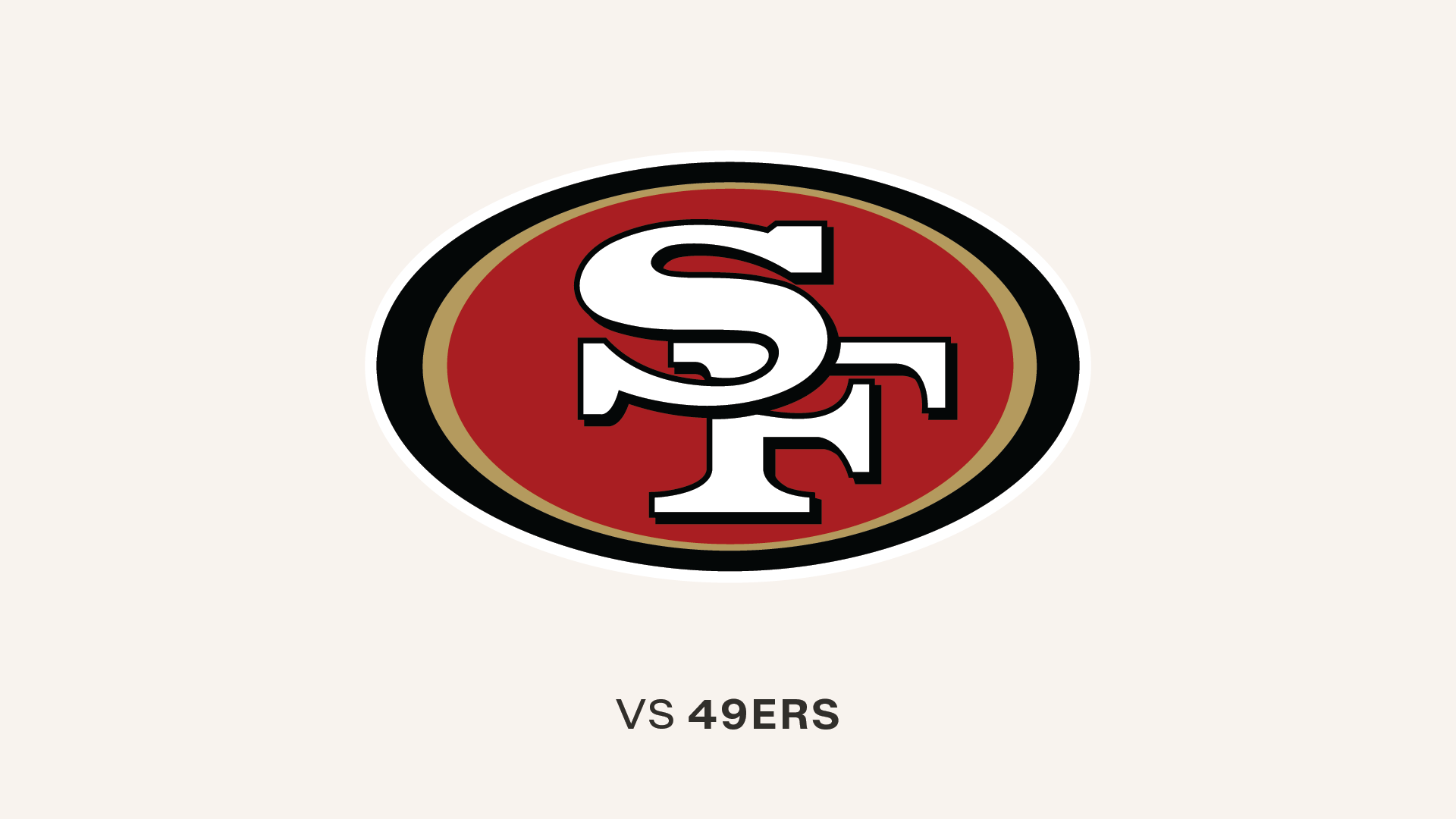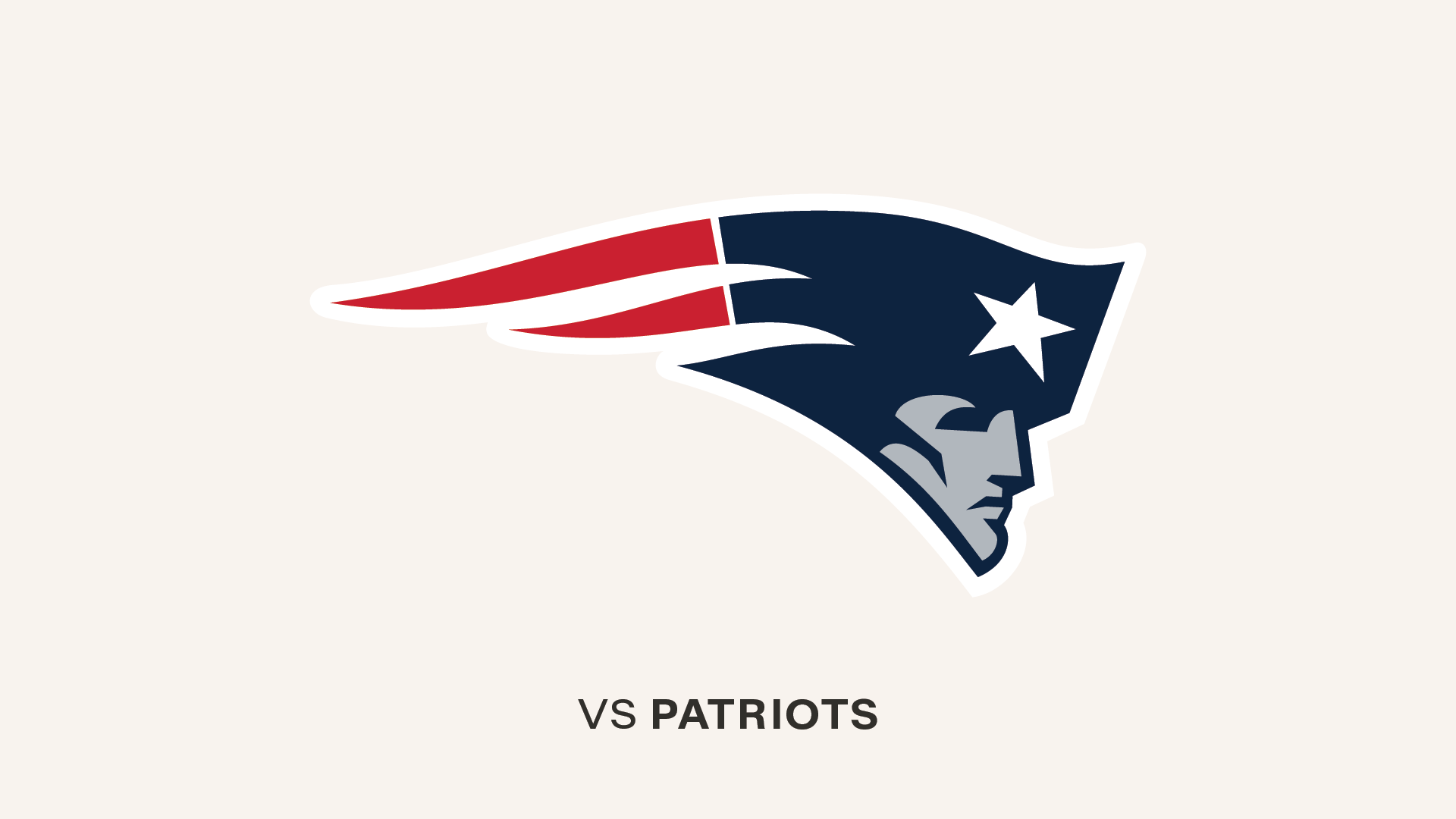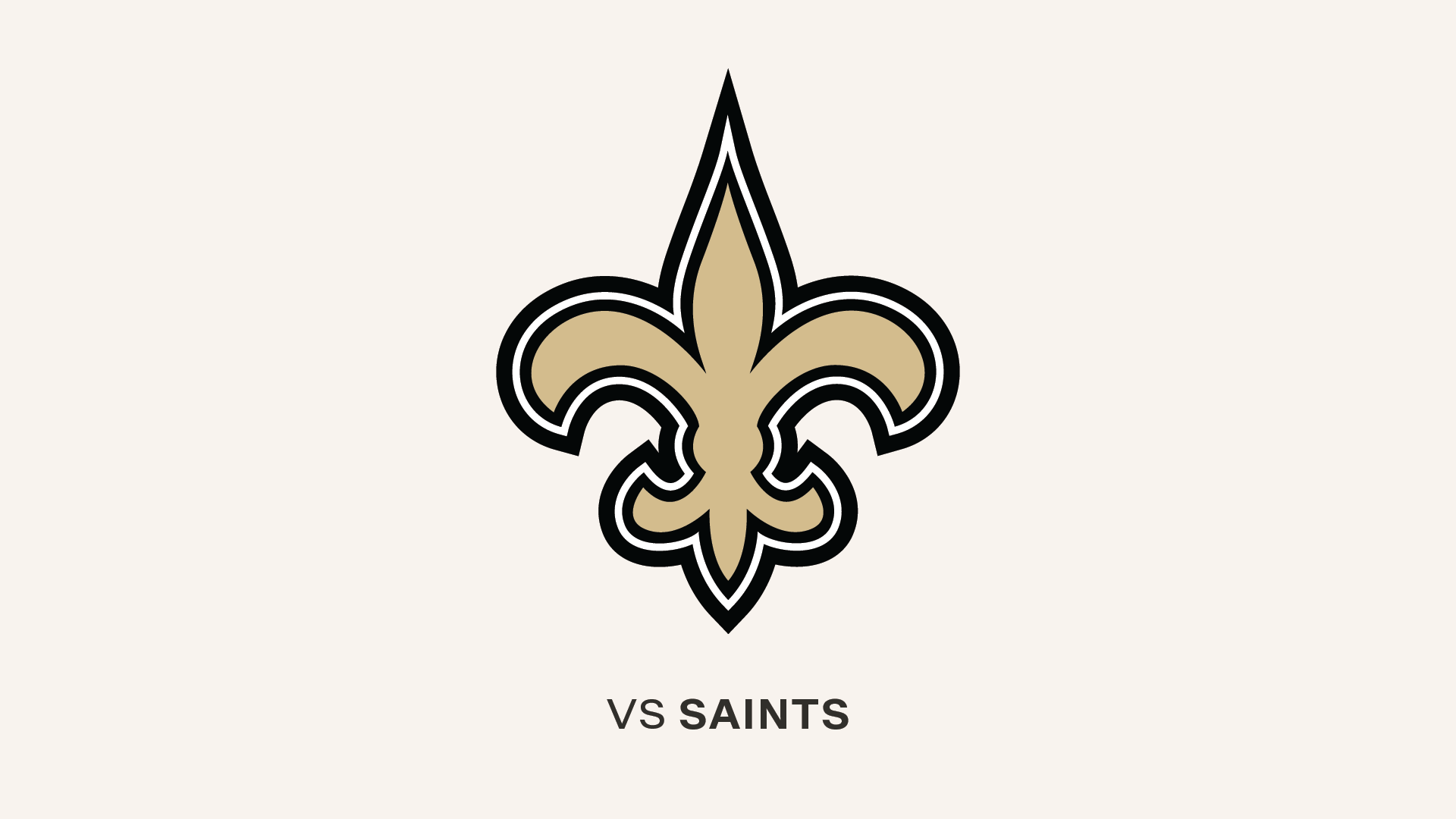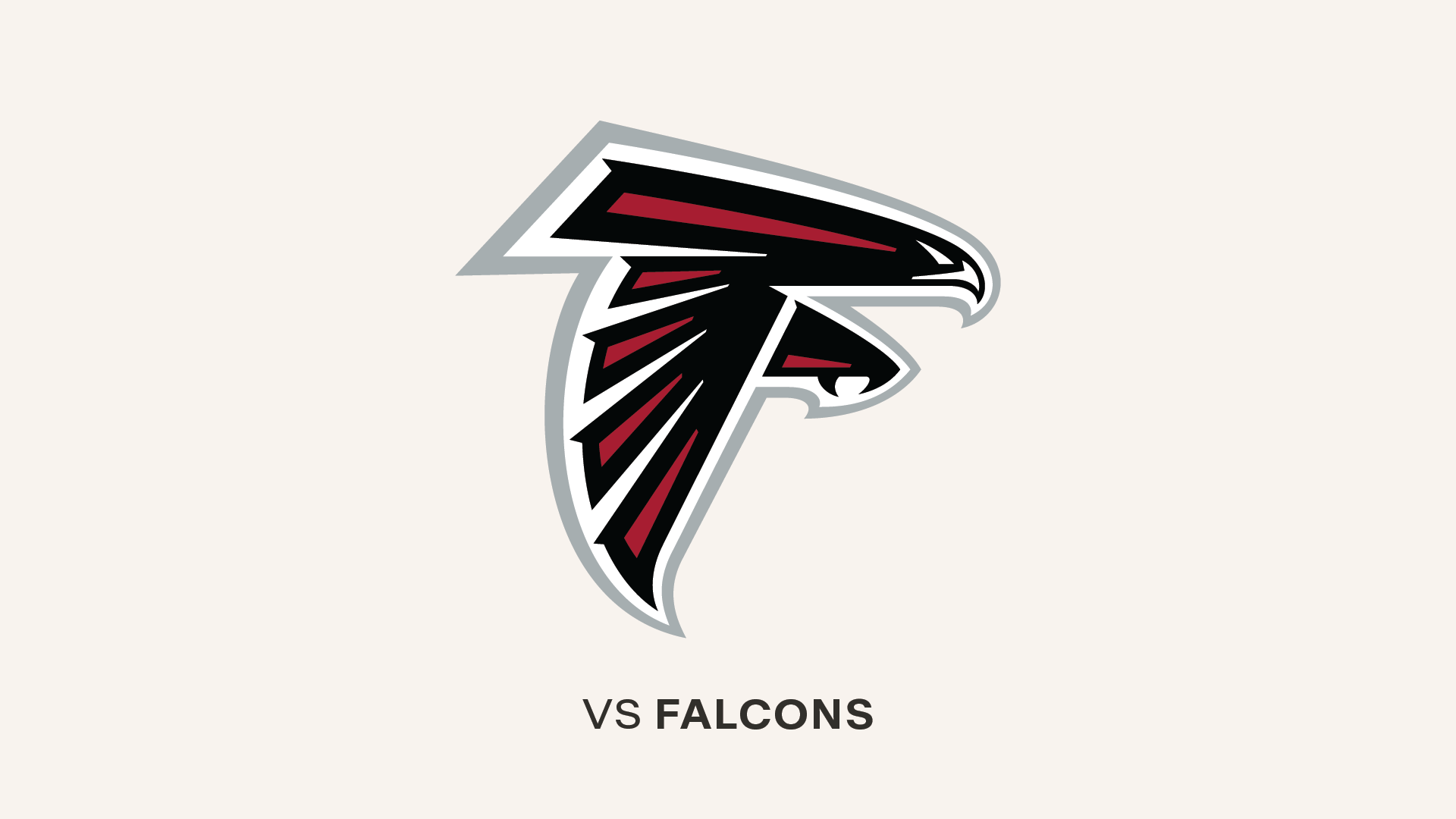The Answer Man is frustrated with his job sometimes.
The editors at Buccaneers.com are giving me one column a week, and I guess that's fine (rumor is I'll get two cracks at the e-mailbag during the upcoming bye week). I mean, I do have other things to do around here. The Gatorade cooler isn't going to stock itself.
But sometimes the Answer Man wishes his response time could be a little more immediate. That's the way I felt last Friday, not long after I posted Volume 11 of my running column.
In that post was a discussion about the Hall of Fame and how players choose which team to represent if they played for more than one (short answer: they don't have to), and another about a smart move made on a kickoff by Washington's Chad Morton.
Well, the article wasn't up for more than a few hours when I got a missive from Todd Oehlson of Anna, Illinois that had me itching to get back to the keyboard. Given that Anna is relatively close to St. Louis, we wonder if Todd might be a Rams fan…but now we're just looking for a reason to criticize.
Here's what Todd had to say:
"Two points about your last article. Anthony Munoz is a Hall of Fame player who was on Tampa Bay's roster, but did not play a game. And, being out of bounds and touching a ball is not a penalty, coming back in bounds is the issue."
Aargh. That one just burned the Answer Man because I specifically thought of Anthony Munoz when I was writing that answer. At the time, I decided that Munoz does not count for the Buccaneers, so I didn't mention him when I said Lee Roy Selmon was currently the only Buc in the hall. And I stick to that. Let me assure you, I know Munoz was briefly in Tampa. I'll elaborate.
True story: In 1992, a young Answer Man, little more than an Answer Kid, really, was just getting his feet wet in the Buccaneer organization. In fact, I went by the pseudonym 'Bob' then and usually wore khakis instead of tights. I was pretty incognito, and my tasks were mostly of the menial variety.
Anyway, right after Sam Wyche coaxed Munoz out of retirement and got him to sign with the Buccaneers, the team was holding its annual FanFest at Tampa Stadium. Munoz flew in to Tampa on the day of the FanFest and was shuttled over to the stadium in the luxury ride of…yours truly!
So here's the Answer Man in his compact car with a sure-fire, first-ballot Hall-of-Famer crammed into the passenger seat, and we take the first entrance into the stadium lot that seems convenient. We're trying to get to the gate through which the Buccaneer players will come out onto the field, and we're almost there. It's a straight shot, no traffic, no lines.
And one stunningly overzealous stadium security guard. Amazingly, this fellow will not let us through, insisting that we drive around to another entrance, despite the fact that the 'correct' entrance will simply bring us back to the same spot. No lie, he actually threw himself on the hood of the Answermobile when I tried to pull around him.
Not the finest moment in the Answer Man's Buccaneer career, admittedly. Munoz, an exceedingly nice man, was uncomfortable but supportive, and he did eventually get in to meet the fans. He also eventually got into the Hall of Fame, as Todd points out.
But he's not a Buccaneer, as much as we'd like to claim him. Munoz got hurt in the preseason and never played another snap of football, not that he needed to in order to cement his legacy. Players land on Tampa Bay's all-time roster when they appear on the active roster during a regular season game. That's an important distinction. Steve Young is on the preliminary ballot for this year's Hall of Fame voting; if he makes it, that will be another Buccaneer in the Hall.
Am I splitting hairs. Yeah, maybe. But Todd started it.
As for the second critique in Todd's e-mail, I think we have somebody else splitting hairs. Todd's statement is correct, but I think his inference that I misinterpreted the rule is a bit harsh. Here's what I wrote:
"Actually, Richard assumed it was a penalty, which is understandable given that in many instances it is a penalty for a player to go out of bounds and then be the first one to touch the ball."
I figured it was understood that what I meant was, it was a penalty for a player to touch the ball if he had gone out of bounds, assuming we'd all be picturing him now standing inbounds and touching the ball first. If that is not clear, than Todd's got me and I offer my sincere apologies to him and the rest of my readers.
Actually, when it's all said and done, and now that the Answer Man has had a week to think it over (thanks, Buccaneers.com editors!), I have to admit that Todd's e-mail contains two interesting points. Not mistakes in my column, I would argue, but further discussion points for two already intriguing issues. So, to extend an olive branch, I'm also going to answer the question that Todd sent in at the bottom of the same e-mail. See below.
**
- Todd Oehlson of Anna, Illinois asks:
My question is this: How many free agents does the personnel department keep tabs on during the season?
Answer Man: The straight answer is roughly 400, Todd, but it's really a lot more than that.
Each year, the Bucs' personnel department keeps tabs on about 400 players who are in the final years of their contracts; in other words, pending free agents, unless they re-sign with their own teams first.
But the thing is, the team's extremely hard-working pro scouts actually form full, updated reports on every single player in the NFL, as well as several hundred more men not on teams but with enough talent to possibly be signed. That works out to approximately 2,000 players; at any time, if one of those players becomes available, the Buccaneers already have an opinion on him. That allows the team to react swiftly and decisively on any possible signing or waiver claim.
Joey Galloway, for instance, was not due to be a free agent in 2004, but the Bucs had to know how they felt about him when the possibility of a Galloway-Keyshawn Johnson swap arose with the Dallas Cowboys. And Derrick Deese would not have been available had he not been released by the 49ers in a cap-related move. Just a few days before training camp, the Bucs signed wide receiver Bill Schroeder to bolster a unit thinned by injuries and Keenan McCardell's expected holdout. Who knew there was a player out there who could quickly absorb Tampa Bay's system and turn in a 100-yard receiving game in his first start as a Buccaneer (in Oakland, Sept. 26)? The Bucs' personnel department had a scouting report on Schroeder that told the team he was a worthwhile signing.
**
- Jack Karako of Coral Springs, Florida:
If the rule book allows the kicking team to be penalized when the opposing team's kick returner goes out of bounds before becoming the first to touch the ball -- why don't more teams do it, especially in critical stages during the 4th quarter of a game?
Answer Man: Well, it looks as if I'm going to have to apologize to Todd. Jack's question makes the Answer Man think he didn't do a particularly good job of explaining the 'kick-returner-out of bounds' issue.
The very specific situation involved was the kick returner standing out of bounds as he caught the ball. In other words, if he is even partially out of bounds, then he is considered all the way out of bounds and his touching the ball is the same thing as the ball going out of bounds. If he catches the ball inbounds and goes out, the ball would be dead at that spot, no penalty.
A return man can't just run out of bounds then run back in and touch the ball. That would be a penalty (and perhaps the distinction Todd was making) on the return team. The returner has to still be out of bounds when he gets the ball.
So the reason a returner doesn't do that more often is that the kickoff is not usually that close to the sideline (and I still suspect a lot of return men in the league don't know the rule as well as Morton). A kicker doesn't want to angle his kick that close to the sideline, because if it goes out of bounds, whether aided by the returner or not, it will be a penalty on the kicking team. Usually, when the ball is headed to the sideline, the return team simply lets it go out of bounds on its own.
**
- Eric Oshins of Las Vegas, Nevada asks:
I was just wondering if there has ever been a team in NFL history that has ended the season with the number-one offense and the number-one defense?
Answer Man: Yes.
Okay, who's next? Next question, anyone?
Oh, I'm sorry, Eric. You probably want to know when that has happened, right? Well, I don't have an exhaustive list of every time it has happened, but I can tell you the last time it happened.
Not surprisingly, the year belongs to the great team of the 1980s, the San Francisco 49ers. However, it did not occur in one of the 49ers' Super Bowl seasons.
In 1987, the 49ers finished first in the league in both offense and defense (we're talking yards here; Eric's question didn't specify, but that's the measurement the league uses for its primary rankings).
San Fran's offense, led by Joe Montana, of course, averaged 413 yards per game. Roger Craig ran for over 800 yards and caught 66 passes and Jerry Rice caught 65 passes for 1,078 yards and 22 touchdowns. Read that again: 22 touchdowns on 65 catches. Tom Rathman, Dwight Clark and John Taylor were all big contributors.
Meanwhile, Ronnie Lott and the San Francisco defense allowed only 292 yards per game, best in the league. Other standouts on that unit included Michael Carter, Keena Turner, Charles Haley and Eric Wright.
However, after going 13-2 in the regular season, the 49ers lost in the divisional playoffs, 36-24, to the Minnesota Vikings. By the way, that was the strike season, so three of the 15 games played that season were by replacement players. Still, that was one loaded team.
**
- Al Sapp of Fredericksburg, Virginia asks:
While we're enjoying Bucs football, the Tampa Bay scouts are working behind the scenes to identify promising college football talent. With the countless number of college games every weekend and the limited number of scouts, how do they choose what games to cover?
Answer Man: Al, methinks you worded that question in such a complimentary manner in order to improve your chances of making it into the column...and you know what? It worked.
Al's question may sound like it was spun straight out of the mouth of a P.R. man, but it's actually quite true. Tampa Bay's college scouts are criss-crossing the nation as we speak, trying to maximize their time in terms of the number of prospects they see. Hundreds and hundreds of names will end up on the team's draft board by next April; somebody in the team's scouting department will have evaluated each one of them.
It isn't easy. In some respects, this question is a natural follow-up to Todd's above, only dealing with potential players before they become pros. And that may be even tougher, since it's so uncertain which of these thousands of collegiate athletes will end up in the league. Every year, there are players who weren't on the radar in the summer who emerge with one big season.
So what do the scouts do? Well, they plan their travels intricately and stay flexible. Director of College Scouting Ruston Webster coordinates the whole affair, with College Scouts Reggie Cobb, Frank Dorazio, Dennis Hickey, Michael Phair and Mike Yowarsky and National Combine Scout Seth Turner giving up weeks of family time.
The matchups are important. If you catch a small school with one intriguing player at a big-time school like USC or Nebraska, you can kill two birds with one stone. And the marquee matchups – say Ohio State at Michigan – are absolute musts, with dozens of potential draftees on display.
There's no specific formula, Al. Just a lot of planning and a lot of driving. By the way, keep a good thought in your head this weekend for Webster, in the heartland this weekend to see Michigan versus Purdue. Webster, you see, is a die-hard Astros fan. Ouch.
**
- Don Kimbrell of Ft. Myers, Florida:
On a kickoff, the kicker's plant foot passes the line before he kicks the ball with the other foot. Would not this be offsides on the kicker? I've noticed some kickers do this while others do not. If any other player passes the line before the ball is kicked it would be a called offsides.
Answer Man: Groan. I was really hoping that this week – just one week – I could get by without cracking open that mind-numbing tome we've all become so familiar with, the NFL Rule Book.
I know I've said a lot of really nice things about that tome, but I didn't mean it. That silver-and-blue cover mocks the Answer Man from the corner of my desk. "Open me," it says. "Wade through my endlessly tortured terminology for one tiny nugget of truth, the one buried kernel for which you search, the one kernel I will hide from you as long as possible."
At least, I think that's what it's saying. The Answer Wife says I have an active imagination.
So, I reluctantly agreed to answer your question, Don, but I vowed to get around the rulebook, so to speak. I left that silver-and-blue cover closed and I simply waited at the edge of the practice field to ask Martin Gramatica.
Good news. Martin said rather matter-of-factly that, yes, his plant foot is allowed to be beyond the line before he kicks the ball. He said it was specifically allowed for in the rules.
And I came back to my desk to pound out your answer, Don. And that book continued to mock me. "What if Martin is wrong?" it needled. "Don't you want the reassurance of my black-and-white truths?"
Dangit, I did. So I dove in again, and finally, in Rule 3, Section 19, I found it.
That rule (it's a short rule, so there is no Article), says the following:
A player is Offside when any part of his body or his person is beyond his scrimmage line, free kick line, or fair catch kick line when the ball is put in play.
Exceptions: The snapper may be beyond his line provided he is not beyond the defensive line.
The holder of a placekick for a free kick may be beyond it.
The holder of a fair catch kick may be beyond it.
The kicker may be beyond the line, but his kicking foot may not be.
That last line holds our answer, Don. Martin could actually contort most of his body past the line if he wanted to, as long as his kicking foot stayed behind it until it struck the ball. You have to admit, that's a pretty practical rule. And it's not surprising at all that the rulebook has it spelled out in specific detail. We've come to expect that.
Now, if anybody out there asks me what a fair catch kick is, I might hurl myself off a bridge.
**
- Keith of Tampa, Florida asks:
Answer Man, what are the Buccaneers' present draft picks for 2005, now that they have traded Keenan. I thought they got a fifth round pick for Roman Oben? What did they get for Jason Whittle? It seems Bruce Allen is doing a good job of stockpiling picks for 2005.
And Jorge Hernandez of Yuma, Arizona asks:
Hi, Answer Man. I am confused. No one that I ask seems to know what 'undisclosed pick' means. I want to know what pick we are getting for Jason Whittle.
Answer Man: Yeah, I think so, too, Keith. And the Buccaneers.com editors posted a story on this just a few days ago. The Bucs currently have 11 picks stored up for next year's seven-round draft.
The McCardell trade netted San Diego's third and sixth-round picks, a nice haul considering Jerry Rice just went to the Seahawks for a conditional seventh-round pick. And, as you said, the Roman Oben trade was good for a fifth-rounder, also from San Diego. Personally, I dug the Chargers as an Answer Child and still love those powder-blue throwbacks, but I'll be rooting for San Diego to lose every game for the rest of the year. The worse their record, the better our acquired picks will be.
The Jason Whittle trade, as Jorge points out, brought an 'undisclosed' pick over from the Giants. The meaning of that term Jorge, and not to be obtuse, is a pick on which the two teams do not which to disclose specific information. It is different from 'conditional,' which means the pick could change depending upon the traded player's playing time or production with his new team. The Whittle deal has netted the Bucs an extra pick, almost surely in the second half of the draft, but I can't share with you what that pick is.
Barring trades, the Buccaneers will pick in the first and second round next spring for the first time since 1999. What's more, those extra picks in the third, fifth and sixth rounds are not insignificant. The team's current starting safeties are third- and sixth-round picks (Dwight Smith and Jermaine Phillips, respectively) and they're backed up by two fourth-rounders (John Howell and Will Allen). Ellis Wyms was a sixth-rounder, Chris Simms came in the third and Sean Mahan and Jeb Terry, the team's two interior OL reserves, were both fifth-round selections.
This is how a team restocks itself, Keith, and it's looking good for the near future.
**
- Hillary of Baton Rouge, Louisiana asks:
Please help before I kill my husband....He says the players' pants are "pewter", but they look brown to me. What is the actual color of the pants?
Answer Man: Ah, notice the lack of a last name with this one? Don't want to give the Baton Rouge police too much to go on in case the argument ever comes to a head, right Hillary?
Actually, we'd have to say that sending this question in to the Answer Man is the move of a smart, rational woman, not one bent on physical retribution. The only problem is, will the Answer Man really be defusing the situation if I side with your husband, Hillary?
Perhaps the most politically correct answer (or maybe just political, as what I'm trying to do is please both sides) is that it depends on your perception. Do they look brown to you? Then you can call them brown.
But we don't. Those pants are pewter and I've got the numbers to back it up. There are three sets of 'PANTONE Color Standard' colors to produce the team's red, black, pewter and orange. One is a 'solid color,' one is a 'process color' and one is a 'textile color.' You'd use a process color (CMYK) in most printing jobs, though the solid colors are also used for that. But, since dyes are not necessarily going to come out looking the same on clothing as they do on paper, you use the textile color for pants and jerseys.
The color of the team's pants is specifically 'Buccaneers Pewter,' which is PANTONE 19-0810TC. I've personally had pewter Buc shirts that appear brown in certain lights, so I guess I know what you mean. But those uniforms the Bucs are running around in on Sunday? That's what pewter pants look like.
Glad we could help take a little violence out of the world. And with that, Answer Man is out.



